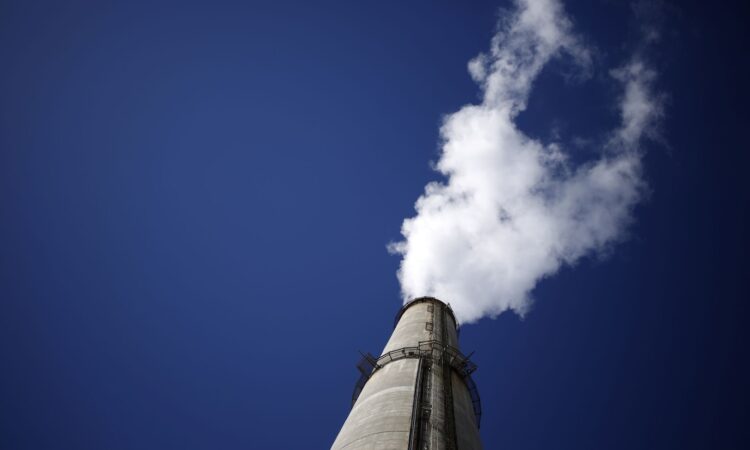
So news that the world’s largest carbon-capture project is being restarted sounds like a bad joke. The punchline is, if anything, worse: Texas’s Petra Nova facility, sequestering gas from a coal-fired power plant, was using it to drive extra crude out of nearby oilfields. The key factor behind its closure in 2020 and revival now has been the price of West Texas Intermediate. Some climate technology.
Still, the purpose of this column is not to bury CCS, but to praise it. For all its manifest issues, it remains an essential part of the toolkit the world needs to reduce emissions over the coming decades. It’s vanishingly unlikely that CCS-abated coal plants like Petra Nova have much of a future as the world’s electricity systems decarbonize. Renewables (and even notoriously costly nuclear) are likely to outcompete them at every turn.
In industry and the sort of gas plants that grids turn to for a few hours a day when daily power consumption peaks, however, the potential of CCS is brighter now than it’s ever been. Don’t count this zombie out just yet.
Most technologies have a series of hurdles they have to overcome before they can be commercialized. First is the scientific one: does it work in the laboratory? Next is engineering: can it be scaled up to an industrial facility? The last hurdle is typically a financial one: can it make money? (1)
Oddly enough, CCS performs pretty well on the first two counts. Roughly 80 million metric tons of CO2 is already being pumped into oil formations every year to push out extra barrels, in the same manner as the Petra Nova facility. That’s not exactly a green activity, but it’s evidence that industrial-scale carbon storage works in engineering terms.(2) The “capture” bit is a bit more complicated, but there’s still 45 million tons of facilities in operation, according to the International Energy Agency, with the prospect of over 220 million tons in 2030.
That’s inadequate to the scale of the problem, when non-agricultural emissions are already running at around 34 billion tons a year. But the fact that CCS is pretty much a proven technology brings its biggest problem into sharp focus: it’s never had a way of making money.
As climate economists like to lament, carbon emissions are an externality — a cost that users don’t have to pay for. The problem for CCS is essentially the same: Just as coal-fired power plants don’t have to pay for their emissions, CCS plants can’t find anyone to give them money to store it underground. That’s changing, however.
Take the European Union’s carbon permit system. For most of the past decade, prices were too low to make CCS viable — especially given the way renewables were pricing fossil fuels out of the power market. That’s reversed, however, with allowances on Tuesday breaching €100 ($107) a ton for the first time and averaging €81/ton over the past year.
Those are attractive prices. At €90/ton, a natural gas plant with carbon capture will outcompete a conventional unabated one, according to a study by the EU’s Zero Emissions Platform. Industrial uses, which are being gradually exposed to the EU carbon prices from which they were previously exempt, have an even more appealing market — one 2020 study found that about 90% of Swedish industrial emissions could be captured for less than €80/ton. It’s a similar situation in the US, where the Inflation Reduction Act offers as much as $85/ton in tax credits for emissions that are stored underground — enough, in theory, to make it viable for swaths of industry.
It’s quite possible that this second coming of CCS will prove as illusory as the first one. If it’s only ever used to drive more oil from exhausted rock formations, it’s not going to be a positive for the world’s climate. But that end-use was always driven by CCS’s lack of the one thing that EU carbon prices and US tax credits now give it: a revenue model. (Equinor ASA’s Sleipner project, built to avoid Norway’s carbon taxes in the mid-1990s, has been quietly sequestering carbon for $17/ton ever since, without driving a drop of oil out of the ground.)
CCS won’t solve more than a slice of the world’s carbon problem. It’s possible that rival technologies, such as hydrogen, heat pumps and electrification, will yet prove a more effective way of getting the greenhouse pollution out of the industrial processes where renewables don’t compete. Still, we should welcome rather than lament the lifeline it’s received from putting a price on emissions. Each year, we push tens of billions of tons of carbon into the atmosphere. We’ll need every tool in the box to reverse that process.
More From Bloomberg Opinion:
We Can Vacuum Carbon From the Sky. Will It Make a Difference?: Lara Williams
To Save the Planet, Poor Nations Need to Get Paid: Mihir Sharma
We Need a Carbon Market to Boost Green Energy Startups: Anne Finucane
(1) With green technology you might want to add a fourth hurdle: does it actually reduce emissions? CCS has often sequestered far less than it’s promised, a further problem with the technology. But it does offer at least marginal benefits.
(2) Another 130 million metric tons is reacted with ammonia to make urea, a crop fertilizer — but we won’t count that, since it mostly ends up back in the atmosphere rather than staying locked up underground.
This column does not necessarily reflect the opinion of the editorial board or Bloomberg LP and its owners.
David Fickling is a Bloomberg Opinion columnist covering energy and commodities. Previously, he worked for Bloomberg News, the Wall Street Journal and the Financial Times.
More stories like this are available on bloomberg.com/opinion






